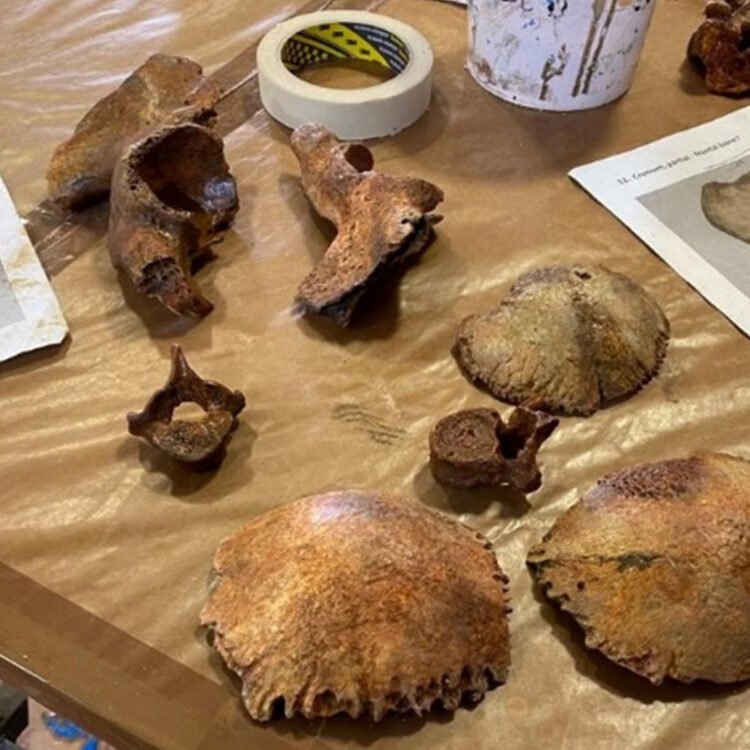ask an archaeologist day 2022
As well as being Development Director for Unusual Projects, Carol is also a fully qualified archaeologist. So today, on #AskAnArchaeologistDay, who better to discuss the growing debate about the display of human remains within our museums and galleries.
As an archaeologist, the thing I am most frequently asked is – have you dug up a skeleton. Well, yes, and frankly they are fascinating. Bones tell a story about who that person was, sometimes you can tell how they lived as well as how they died and the way the body was buried tells you a lot about the culture and time in which they lived. Whilst the initial squeamishness passes, what remains is an understanding and respect that this was once a person and must be treated accordingly.
Whilst few dispute the importance of Archaeological excavations of human remains, an increasing debate within Heritage Organisations relates to the display of human remains. Surveys repeatedly show that the majority of visitors are very comfortable with seeing human remains and it is argued that displays help bring visitors into contact with people from the past in a unique way, but an increasing number of institutions are now asking – Does the educational benefit of display human remains outweigh the rights of the dead?
What if this was the body of one of your relatives, a Grandfather, would you still be cool with it, how much time must pass before its considered ok? Whilst we cannot ask the dead their opinion, it’s very hard to assume that if we could, they would be fine with it.
A compromise is to display replicas. Last year we were asked by Great North Museum Hancock to assist them with producing replica bones for public display. The museum is undergoing an ethical review of the display of human remains and replacing artefacts with replicas as appropriate.
“The quality and detail of the replica human bones made for us by Unusual Projects was outstanding. We were hard pressed to tell them apart from the original material, and it offers visitors a real understanding of the nature of archaeological evidence whilst meeting our display standards.”
These replicas were required to match every single detail of the original Bronze Age skeleton. We worked closely with the curatorial team to ensure we had enough dimensional and photographic colour reference and then we created the replicas, by hand sculpting detail and hand finishing with a scenic paint wash to create the correct discolouration.
If you have decided that the time has come for remains to be repatriated or removed from display, we are always happy to discuss the different interpretative options available, just get in touch via hello@unusualprojects.uk


